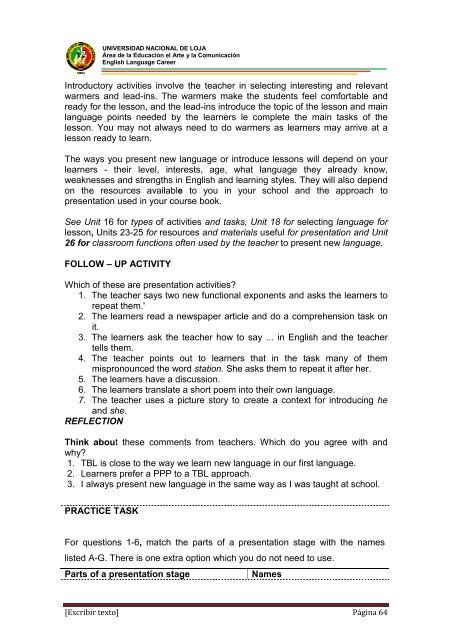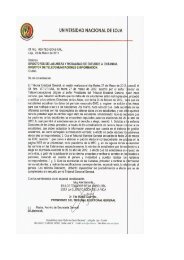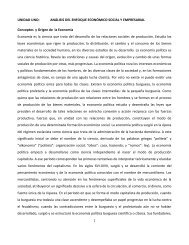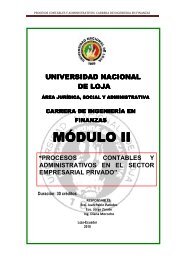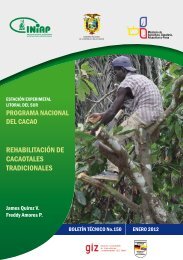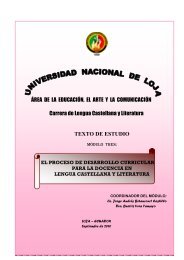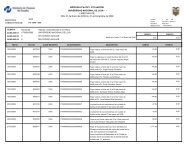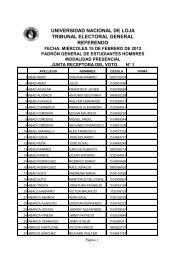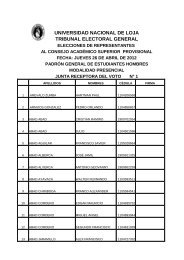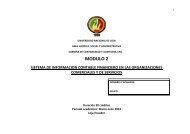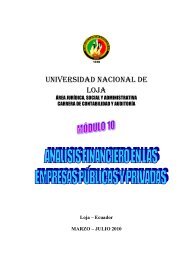module 5 planning of the english language teaching-learning process
module 5 planning of the english language teaching-learning process
module 5 planning of the english language teaching-learning process
You also want an ePaper? Increase the reach of your titles
YUMPU automatically turns print PDFs into web optimized ePapers that Google loves.
UNIVERSIDAD NACIONAL DE LOJA<br />
Área de la Educación el Arte y la Comunicación<br />
English Language Career<br />
Introductory activities involve <strong>the</strong> teacher in selecting interesting and relevant<br />
warmers and lead-ins. The warmers make <strong>the</strong> students feel comfortable and<br />
ready for <strong>the</strong> lesson, and <strong>the</strong> lead-ins introduce <strong>the</strong> topic <strong>of</strong> <strong>the</strong> lesson and main<br />
<strong>language</strong> points needed by <strong>the</strong> learners le complete <strong>the</strong> main tasks <strong>of</strong> <strong>the</strong><br />
lesson. You may not always need to do warmers as learners may arrive at a<br />
lesson ready to learn.<br />
The ways you present new <strong>language</strong> or introduce lessons will depend on your<br />
learners - <strong>the</strong>ir level, interests, age, what <strong>language</strong> <strong>the</strong>y already know,<br />
weaknesses and strengths in English and <strong>learning</strong> styles. They will also depend<br />
on <strong>the</strong> resources available to you in your school and <strong>the</strong> approach to<br />
presentation used in your course book.<br />
See Unit 16 for types <strong>of</strong> activities and tasks, Unit 18 for selecting <strong>language</strong> for<br />
lesson, Units 23-25 for resources and materials useful for presentation and Unit<br />
26 for classroom functions <strong>of</strong>ten used by <strong>the</strong> teacher to present new <strong>language</strong>.<br />
FOLLOW – UP ACTIVITY<br />
Which <strong>of</strong> <strong>the</strong>se are presentation activities?<br />
1. The teacher says two new functional exponents and asks <strong>the</strong> learners to<br />
repeat <strong>the</strong>m.'<br />
2. The learners read a newspaper article and do a comprehension task on<br />
it.<br />
3. The learners ask <strong>the</strong> teacher how to say ... in English and <strong>the</strong> teacher<br />
tells <strong>the</strong>m.<br />
4. The teacher points out to learners that in <strong>the</strong> task many <strong>of</strong> <strong>the</strong>m<br />
mispronounced <strong>the</strong> word station. She asks <strong>the</strong>m to repeat it after her.<br />
5. The learners have a discussion.<br />
6. The learners translate a short poem into <strong>the</strong>ir own <strong>language</strong>.<br />
7. The teacher uses a picture story to create a context for introducing he<br />
and she.<br />
REFLECTION<br />
Think about <strong>the</strong>se comments from teachers. Which do you agree with and<br />
why?<br />
1. TBL is close to <strong>the</strong> way we learn new <strong>language</strong> in our first <strong>language</strong>.<br />
2. Learners prefer a PPP to a TBL approach.<br />
3. I always present new <strong>language</strong> in <strong>the</strong> same way as I was taught at school.<br />
PRACTICE TASK<br />
For questions 1-6, match <strong>the</strong> parts <strong>of</strong> a presentation stage with <strong>the</strong> names<br />
listed A-G. There is one extra option which you do not need to use.<br />
Parts <strong>of</strong> a presentation stage<br />
Names<br />
[Escribir texto] Página 64


